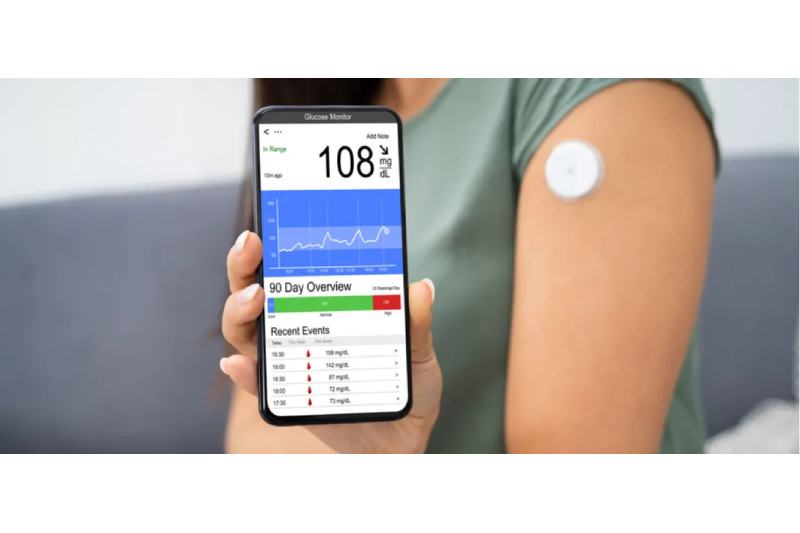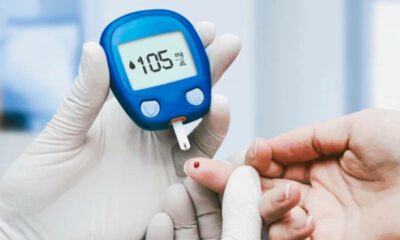For individuals living with diabetes, managing blood sugar levels is a constant balancing act. Traditional methods rely on finger pricks and blood glucose meters, providing a snapshot at a specific time. However, continuous glucose monitoring (CGM) offers a revolutionary approach, unlocking a wealth of data that empowers better blood sugar control and improved health outcomes.
This article delves into the world of CGM, exploring its technology, benefits, and potential applications. We’ll discuss how CGM empowers individuals with:
- Real-time insights: Continuously monitor glucose fluctuations throughout the day and night.
- Improved decision-making: Gain a deeper understanding of how food, exercise, and other factors impact blood sugar.
- Enhanced control: Proactively adjust insulin dosages and lifestyle habits for optimal blood sugar management.
Understanding Blood Sugar Control
Blood sugar, also known as glucose, is the primary energy source for our cells. The body tightly regulates blood sugar levels through a complex interplay between hormones like insulin and glucagon. In healthy individuals, this system maintains blood sugar within a target range.
However, in diabetes, this regulation is disrupted. There are two main types of diabetes:
- Type 1 diabetes: The body produces little to no insulin, requiring lifelong insulin therapy to manage blood sugar.
- Type 2 diabetes: The body either produces insufficient insulin or develops resistance to its effects, leading to elevated blood sugar levels.
Chronically high blood sugar (hyperglycemia) can lead to a cascade of health complications, including:
- Heart disease
- Stroke
- Kidney disease
- Neuropathy (nerve damage)
- Vision problems
- Foot ulcers
The Traditional Approach: Finger Pricks and Blood Glucose Meters
For decades, finger pricks and blood glucose meters have been the mainstay of blood sugar monitoring. This method involves pricking a fingertip with a small lancet to draw a blood droplet and then measuring its glucose level using a meter. However, this approach has limitations:
- Painful: Finger pricks can be uncomfortable, especially for frequent monitoring.
- Inconvenient: Requires carrying a meter and test strips, disrupting daily routines.
- Limited data: Provides a single point-in-time measurement, not reflecting glucose fluctuations throughout the day.
The Dawn of Continuous Glucose Monitoring (CGM)
CGM technology represents a significant advancement in diabetes management. Unlike finger pricks, CGM sensors are small, wearable devices inserted just under the skin, typically in the abdomen or arm. The sensor measures glucose levels in the interstitial fluid (fluid surrounding cells) every few minutes and transmits this data wirelessly to a receiver or smartphone app.
This continuous data stream offers several advantages:
- Real-time monitoring: Provides a constant picture of blood sugar trends, allowing for proactive adjustments.
- Reduced finger pricks: Lessens the need for frequent finger pricks, improving comfort and reducing pain.
- Trend analysis: Identifies patterns in blood sugar fluctuations, helping predict and prevent hypoglycemia (low blood sugar) and hyperglycemia.
Benefits of CGM for Improved Blood Sugar Control
Research has consistently demonstrated the positive impact of CGM on blood sugar control for individuals with diabetes:
- Improved glycemic control: Studies show that CGM use can lead to significant reductions in HbA1c, a key measure of long-term blood sugar control.
- Reduced hypoglycemia risk: CGM alerts can warn users of impending hypoglycemia, allowing them to take corrective action before symptoms arise.
- Enhanced insulin management: By providing a clearer picture of glucose trends, CGM helps fine-tune insulin dosages for optimal blood sugar control.
- Improved quality of life: CGM can reduce anxiety associated with blood sugar fluctuations, leading to a greater sense of control and improved well-being.
Beyond Diabetes: Applications of CGM
While CGM is primarily used for diabetes management, its applications extend beyond this. Researchers are exploring its potential in other health conditions:
- Prediabetes: CGM can help identify individuals at risk of developing type 2 diabetes by revealing early signs of impaired glucose regulation.
- Polycystic ovary syndrome (PCOS): CGM can be used to understand how blood sugar fluctuations impact PCOS symptoms and treatment.
- Gestational diabetes: CGM can be valuable for monitoring blood sugar during pregnancy and promoting healthy outcomes for both mother and baby.
- Metabolic health research: CGM data provides valuable insights into how the body responds to diet, exercise, and other lifestyle factors, aiding research on metabolic health.
Considerations and Future Directions of CGM
Despite its advantages, CGM has limitations to consider:
- Cost: CGM sensors and transmitters can be expensive, and insurance coverage may vary.
- Sensor insertion: While minimally invasive, sensor insertion can cause some discomfort.
- Accuracy: CGM readings may require calibration with finger pricks to ensure accuracy.
Looking Ahead: The Future of CGM Technology
- The future of CGM is bright, with ongoing advancements aiming to address current limitations and unlock new possibilities:
- Improved affordability: As technology matures and adoption increases, CGM costs are expected to decrease, making it more accessible.
- Minimally invasive and painless sensors: Research is ongoing to develop even smaller, more comfortable sensors with easier insertion processes.
- Integration with insulin pumps: Closed-loop insulin delivery systems that combine CGM with insulin pumps are being developed, potentially automating insulin delivery based on real-time glucose levels.
- Continuous monitoring of other biomarkers: Future CGMs may integrate sensors to monitor additional biomarkers like ketones, offering a more comprehensive picture of metabolic health.
Conclusion
Continuous glucose monitoring (CGM) has emerged as a game-changer in diabetes management. By providing real-time insights into blood sugar fluctuations, CGM empowers individuals to make informed decisions, improve blood sugar control, and ultimately achieve better health outcomes. As technology continues to evolve, CGM holds immense potential to not only revolutionize diabetes care but also contribute to a broader understanding of metabolic health for all.

 Diabetology2 weeks ago
Diabetology2 weeks ago
 Diabetology1 week ago
Diabetology1 week ago
 Diabetology5 days ago
Diabetology5 days ago
 Diabetology6 days ago
Diabetology6 days ago
 Diabetology6 days ago
Diabetology6 days ago
 Diabetology3 days ago
Diabetology3 days ago
 Diabetology3 days ago
Diabetology3 days ago
 Diabetology1 day ago
Diabetology1 day ago











